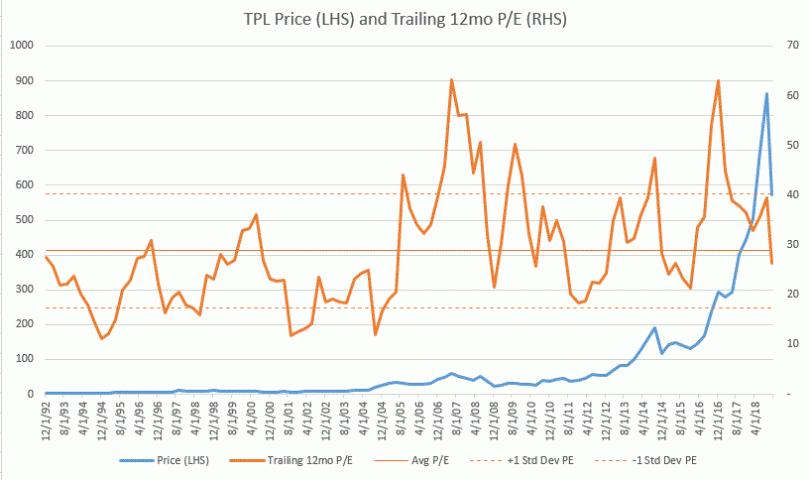TPL Declaration of Trust
There have been a number of questions on Seeking Alpha and Yahoo Conversations pertaining to 1) TPL’s dividend policy, 2) TPL entering into the water business, and 3) TPL’s recent (though not complete) land swap.
To me, it appears as if management is acting in accordance with the Declaration of Trust (linked above). Here is why I think that…
Can TPL pay a dividend? I thought they were a liquidating trust?
SEVENTH. Dividends to the certificate holders out of moneys derived from royalties for coal and minerals, and from the net rents, issues and profits derived from the use of the said lands, premises and property, and proceeds of sale of said lands, premises and property, or of any part thereof, shall be made by the trustees in their discretion whenever such moneys, net profits and proceeds shall be sufficient for that purpose after providing for all taxes, expenses, liabilities and engagements of the trust; but the trustees shall have power in their discretion whenever it shall appear to them for the interests of the certificate holders, to apply such parts of the funds derived as aforesaid, which would otherwise be applicable to dividends, as they may think fit, to the purchase of outstanding certificates under such proper regulations as they may prescribe, and all certificates purchased under this power shall be forthwith canceled. Dividends shall be payable only to the persons who are by the books of the trustees shown to be certificate holders at the time the dividend shall be payable and the books may be closed by the trustees for a reasonable time for the payment of such dividend.
I thought TPL was a liquidating trust, why did are they spending money on the water business?
TPL sold a bunch of land. Why are they swapping for other properties and not buying back stock?
FIRST. The said Charles J. Canda, Simeon J. Drake and William Strauss and the survivors and survivor of them, and their successors or successor in the trust (hereinafter, for brevity, styled "the Trustees"), shall have and exercise the management, control and ownership (both legal and equitable) of the said lands, premises and property. They shall have all the powers in respect of said property of an absolute owner, as to selling, granting, leasing, alienating, improving, encumbering or otherwise disposing of the same or of any part or parcel thereof, and they may, whenever they shall deem it necessary or advisable for the protection or benefit of the property or any part thereof, purchase other lands and premises, and when purchased such other lands and premises shall be held and managed by the said trustees under the terms and provisions of this declaration of trust in the same manner as the lands and premises hereinbefore described are held and managed.

